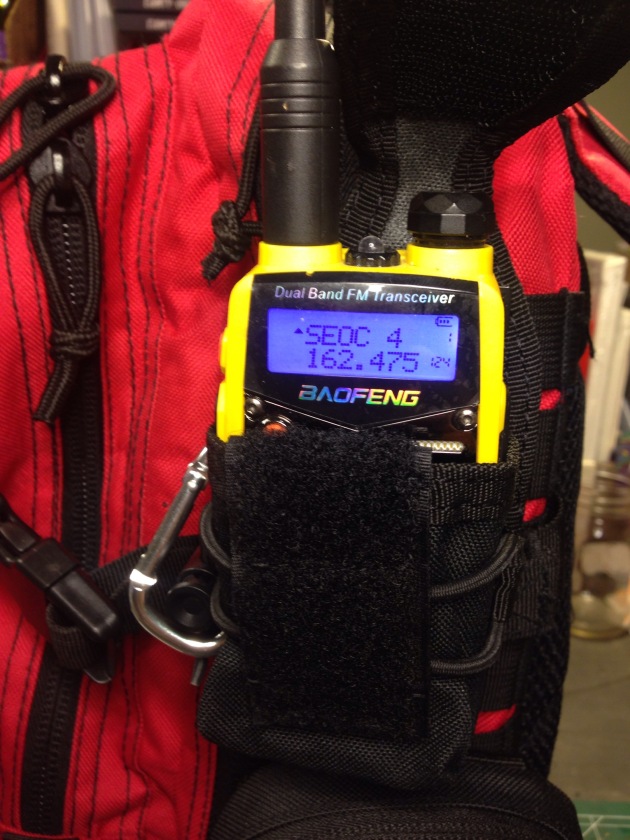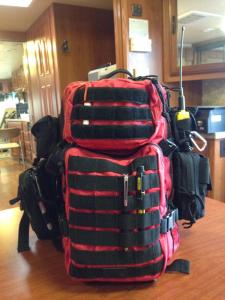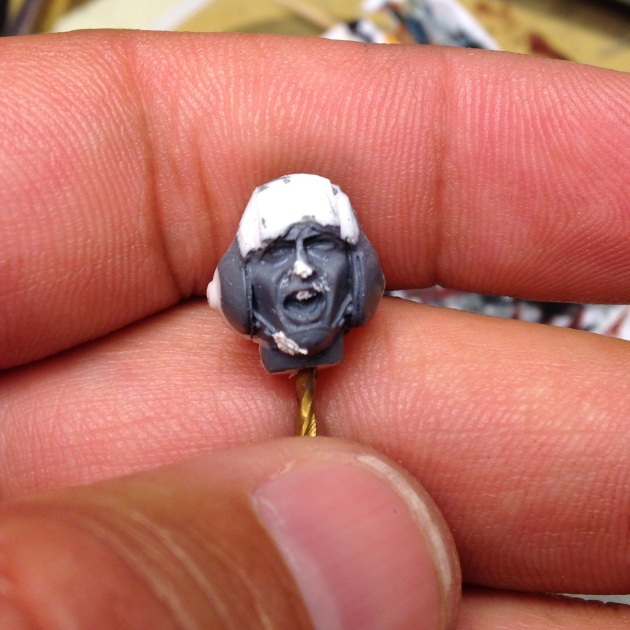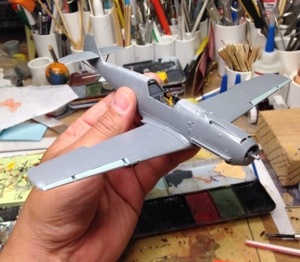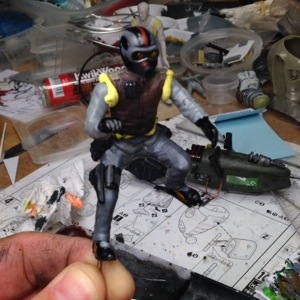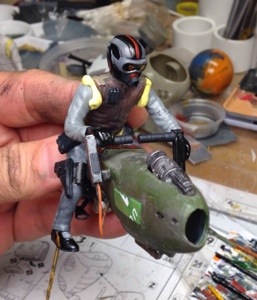Before we start, a quick blurb about me: I am not military personnel or a law enforcement officer (LEO). I work in the field of emergency management, and on any given day I may show up for work and be told to drive 400 miles and situate myself appropriately to conduct damage assessments, integrate into an incident command structure on any nature of disasters (wildfire, tornado, flood, etc.), assist with interoperable communications, or any other number of things. In short, when I go into work, I need to be prepared to respond to just about anything emergency management related. I do not carry a firearm either in a professional or recreational setting, so I’ve got no input of value on that particular subject. Okay… Onward.
So you’ve heard the term “EDC” and you want to know more about what, exactly, that means. Well, here’s my interpretation (your mileage may vary): “EDC” is “Every Day Carry”. Or, those items you carry with you every day. Depending on the day, that may vary. But there’s some things that you probably always carry with you: Your car keys, your wallet, a pocket knife and/or multi-tool.
Then, depending on your level of forethought or your concern for preparedness (or the requirements of your profession), you may go above and beyond that. Maybe a little, maybe a lot. You may have an EDC bag–a sling bag or a backpack containing those items that, depending on your circumstances, you may want or need access to during the course of your day. This can include things like pens, pencils, notebooks, a laptop, a flashlight, a charger cord for your phone, an individual first aid kit (IFAK), etc.

Or, if you’re me, you carry all of the above, plus basic screwdrivers, markers, maps, a tablet, binoculars, a programmable two-way radio (and the cable to program it), a daily planner, gloves (both disposable and “work”), medicine, a battery to charge your phone, and adapters for everything.
When it comes to EDC, the best thing to do is figure out what you may want, need, or wish you had on any given day, and make you EDC bag from there.
Okay, So You Want to Build an EDC Pack. What Do You Buy?
Short answer: Whatever you want. There are several makers of backpacks and sling packs out there. And most of them seem to be copying Maxpedition designs–and offering them at a much lower price point. This is not an endorsement, but I currently use two sling packs and one backpack from Red Rock Outdoor Gear. I’ve found their sling packs to be fantastic, but I haven’t decided about the backpack yet. I love the design (and the colors of their “Rebel Assualt” line), but the shoulder straps are a little thin–both in size and padding–and are starting to show some minor signs of fraying. When shopping, just go to your favorite site (or search engine) and use phrases such as “tactical pack”, “tactical sling pack”, and “tactical backpack”. You’ll get relevant results.
As to the sling pack versus backpack debate… I use both. I’ve found advantages and disadvantages in both.

BACKPACK
PROS: Dividing the weight of the pack between both shoulders, versus primarily carrying it on one with a sling pack. Generally larger carrying capacity than sling packs. Generally more MOLLE webbing.
CONS: Not as quick to put on or take off as a sling pack. Generally narrower straps. Not able to access pack while still carrying it.

SLING PACK
PROS: More comfortable straps. Easy to access contents of pack without taking it off. Can usually be worn with pack on chest or on back. Can usually be worn over one shoulder, or diagonally (say, from left shoulder to right hip), giving some flexibility in how it’s carried.
CONS: Medium to large sling packs, carrying a full load, can cause the straps to push into your chest–even if said straps are well-padded. This can aggravate respiratory conditions, such as asthma. Generally less carrying capacity and MOLLE webbing than backpacks.
So What About MOLLE? How Does That Figure In?

What is MOLLE? Wikipedia defines it as “an acronym for Modular Lightweight Load-carrying Equipment. It is used to define the current generation of load-bearing equipment and backpacks utilized by a number of NATO armed forces”. It uses a standardized Pouch Attachment Ladder System (PALS) webbing to allow you to quickly add or remove purpose-specific pouches (or other attachments) to your MOLLE-compatible pack, bag, vest, etc. In other words, let’s say I have a backpack with MOLLE webbing and I want to add a small two-way radio, but I want to be able to access it quickly. I grab a trusty model “HHR” pouch, made by Condor, weave the MOLLE strap on the pouch through the MOLLE webbing on the pack, and VIOLA! I’ve got a radio pouch integrated into my EDC. And they make MOLLE attachments in just about every size and shape you can imagine.

Some of the most useful pouches I’ve found are admin pouches (designed to carry pens, etc.) and “gadget” pouches. I’ve seen admin pouches used to carry tools, configured as IFAKs, or as intended. In mine, I tend to carry pens, pencils, a highlighter, a flash drive, an extra-compact phone charger dongle, etc. Gadget pouches are generally designed to carry phones and accessories. I tend to put just accessories in mine: Charging cable, AC USB adapter, DC (car) USB adapter, charging battery, stylus, and headphones. If needed, I can drop my phone in there, as well.

In future entries, I’ll go into more detail on how I have my packs loaded out, but this is just a very long-winded introduction. Hopefully, for the non-military, non-LEO folks, it’ll help take away some of the mystery on exactly what EDC and MOLLE is–and isn’t.
